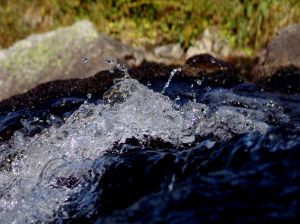Nine Better Stream Cleanup Tips
Last Updated: June 12, 2024
If you have never done this activity before, you need some stream cleanup tips. Below we are sharing observations about what works and does not work, based on years of experience in watching volunteer groups do this important work and participating in it myself.

1. Prepare people well for the day. This prevents both serious injuries and people quitting on you because they expected shade, they thought someone else would do all of the wading and they could just pick up chip bags along the bank, and they thought all of the trash would be pristine and lightweight, with no sharp edges.
2. Explain to your volunteers that they will need boots or hip waders if you plan to have everyone in the stream. Be frank about any dangers and inconveniences volunteers will face, and if you see a role for people who want to stay on the banks, say that too. We recommend holding your cleanup rain or shine, but of course hurricanes or other major storms would be exceptions. In some climates, a major downpour would mean cancelling; you understand your weather patterns. It is a good idea to collect cell phone numbers from all volunteers so you can text if you need to cancel, alter the start time, or advise of changing conditions.
3. Have water, appropriate
refreshments, sunscreen, and a first aid kit available. Know where
there are restrooms. Post information about all of this near your registration
table.
4. If you know the area to be a haven for poison ivy or some other poisonous plant, be sure to point it out to participants. Better yet, advise your volunteers in advance; some will want to cover themselves a little more as protection. I know of one neighborhood organization that did not think to do this, and several people with severe poison ivy reactions were irate. They lost that little contingent of people as future volunteers. Not to mention, you really don't want to be responsible for someone's severe reaction.
5. It seems like you shouldn’t have to do this, but be sure to say in advance that people might encounter snakes or whatever other critters that some people may find yukky.
6. Remember to document your effort with photos and video. If there is large rubbish in the stream, grab the camera, and certainly at the end of the day show the quantity. Post it on Facebook, X, TikTok, and other social media accounts; we advise that you encourage several people to do so.
7. Mind your manners and make sure everyone is thanked; notice who's preparing to leave and acknowledge their effort.
8. As noted above, it is a good practice to encourage people to sign up in advance to participate in the day. That will help you plan for the correct amount of refreshments and tools. Remember that you will need to have each volunteer sign a waiver of legal liability; taking care of that in advance is another reason for a pre-registration. Individuals and small non-profits certainly do not want to have to defend a lawsuit if someone is cut or exposed to chemicals. If you do not have ready access to a waiver form already and cannot afford an attorney, look online for a suitable form, which will be better than nothing.
9. If you think your participants would be interested, tie your efforts to watershed planning or broader community revitalization efforts. This element tends to work nicely in areas where you have some millennials or highly educated folks among your volunteers.
If you have either questions or can contribute a story about how you planned and executed your own stream cleanup, please go to the Cleanup Questions and Stories page to find the form to send that to us. If you have asked a question, I will try to answer.
- A Good Community >
- Community Improvement Projects > Stream Cleanup Hints
Join GOOD COMMUNITY PLUS, which provides you monthly with short features or tips about timely topics for neighborhoods, towns and cities, community organizations, and rural or small town environments. Unsubscribe any time. Give it a try.
